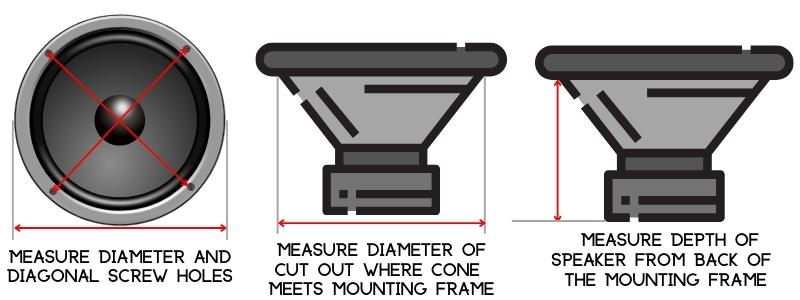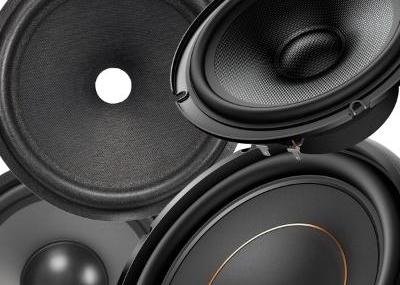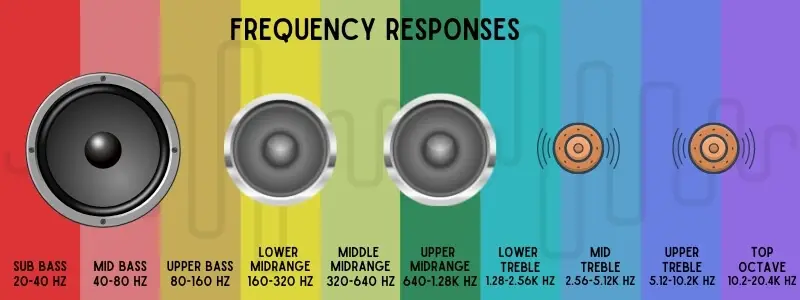How To Measure Car Speaker Size
Car speaker size is a tricky one, because there’s no definitive size, and a 6×9 car speaker might not necessarily measure 6 inches x 9 inches on its mounting frame.
The actual size isn’t about the cone or even the speaker frame, instead it’s more to do with matching the mounting holes and getting a speaker that’s big enough to fit.
Of course, when you want to install some aftermarket car speakers you need to know the size to get. But it’s not just about matching the size of the mounting holes and replacing like for like.
Determining your factory speaker sizes is tricky, because car manufacturers don’t conform to the sizing standards anyway. They’re more bothered about saving money and getting something that fits their model.
So if you want to know how to measure car speaker size, read on…
What Size Speakers Are In My Car?
Car speaker size is a misnomer really, because there’s no definitive size, especially for factory speakers.
Instead it’s better to think of car speakers as categories, and measure the factory speaker and replace it with a set with dimensions that will fit in the place your factory ones are.
That’s not to say you can’t replace your door speakers with bigger ones, but if you choose to do this you’ll have some extra work to do to ensure they fit.
But to find the right speaker size for your car, carry out the following step-by-step guide:
First you should turn off the power, so you don’t unintentionally injure yourself. Then, remove your factory speakers, by prying the covers off or unscrewing them. Then unscrew the mounting holes, so you can slide the speaker out easily.

Once the speaker is out, make sure you disconnect any speaker wires so you can take it fully out of the mounting hole.
Now it depends what shape your factory speakers are. If they’re a 6.5” driver they’ll be a round shape, whereas 6×9 or 6×8 drivers will be oval shaped.
Then measure from the widest point from each side with the car speaker faced upwards, and also measure the mounting holes from the lower left to the upper right holes, and vice versa.
Now turn the speaker round and lay it face down so you can measure the diameter of the cut-out. This is the widest part of the cone that’s attached to the back of the mounting frame.
The cut-out should be no bigger than the mounting hole because it has to slide into the hole. Also, if the mounting hole is quite a bit bigger, you could have problems with speaker rattle, so make sure the fit will be as snug as possible.
That said, you can get different car speaker sizes into the same mounting hole if the mounting holes will match. Or you could always get some speaker brackets to help you with installation if they don’t match. Whichever size you go for, it’s always best to get the biggest car speaker size possible for the holes you’re mounting them into.
Now measure the depth of the speaker. This is a common area where people get the wrong speaker size, especially those with smaller cars. Now measure the depth from the bottom of the speaker to the underside of the mounting frame, which is the lip area that the mounting holes are located.
That’s it, that’s all the car speaker sizes you need to replace your old factory speakers with some new ones and make a major impact on the fidelity in your car.
Other How Tos from SoundRating
How to Clean iPhone Speakers
How to Build a Ported Subwoofer Box
How To Connect an iPhone and Car Radio
Getting It Right – It’s Not Just About Measuring Car Speaker Sizes
So you now know what size speakers are in my car, now it’s time to look for some that will give your car stereo system that boost.
Coaxial vs Component Speakers
The first thing you should decide on is whether to get coaxial or component speakers. They both come in all sizes, but coaxial speakers are an all-in-one speaker with a tweeter protruding from the center of the speaker and an inbuilt crossover.
Component speakers have separate components, so the tweeter will be separate as will the crossover. This makes them harder to install, but pound-for-pound the quality of sound they produce should be better.
For a deeper look at coaxial vs component speakers, look no further.
Woofer Material and Quality

When it comes to the speaker construction, you should look at the quality of the woofer material.
Woofers come in all shapes, sizes and qualities, but the most popular materials are treated paper, polypropylene, flax and metals.
The woofer needs to be light and rigid so it can handle the lower frequencies without distortion, but each material produces a different sound so make sure you know what you want before getting them.
Speaker Surround
This is the part that connects the woofer cone to the frame and allows it to move in and out to produce the sounds that are delivered to it from the amplifier. The speaker surround material is important, too. Cheaper speakers will have a foam surround, but if you want the best you should go for a butyl rubber or treated cloth surround, as these will give you the best longevity.
High Efficiency
You want a speaker with a high efficiency. This is the sensitivity rating and is given in decibels (dB), and it should ideally be 90dB and upwards. The higher the sensitivity, the less power it will need to perform. This is especially important if you’re running them from your factory head unit, because they aren’t very powerful at all.
Power Range
For the power range you should aim for speakers with a low power range, say from 2-50W. This is plenty for your car door speakers, because you don’t want some that need a lot of power to work.
Frequency Response
Frequency Response is another important thing to look for in car speakers. It’s measured in Hertz (Hz) and basically it means the speaker will be able to reproduce those frequencies without any problem.

If you like bass, you should go for as big as possible speakers with a frequency range starting around 60 Hz. Anything under that, you should be looking at subwoofers. And as long as your speakers have a higher frequency range of around 20 kHz, then this is more than enough for the highs.
Measure Car Speaker Size, Know What to Look For and Improve Your System
Knowing what speakers fit my car isn’t difficult, but if you rush into it without getting the right measurements, you could waste time and money.
Make sure you measure your factory speakers diagonally, wide point to wide point, and also the depth of your speaker.
It’s always a good idea to get as big as possible a speaker to fit the mounting hole. This will ensure you have little room for speaker rattle, and they will likely sound better than smaller speakers.
But of course, it’s not just about the right car speaker size. Getting the right materials, and speakers that suit the right power handling and sensitivity is important. After all, you’re spending money to improve the fidelity in your car, so it’s worth spending a bit of time and money to make sure you get it right.

I am a passionate and skilled car audio enthusiast with 15 years of experience in the industry. My journey started when I replaced my first set of factory car speakers, sparking a deep love for high-quality sound. Since then, I have worked as a representative for renowned brands like Kenwood and Alpine.
With a background in both retail and distribution, I have developed a comprehensive understanding of the car audio market. Currently a certified (MECP) installer in the Mobile Electronics industry, my expertise lies in delivering top-notch audio installations. My knowledge, coupled with my genuine passion, makes me the go-to professional for all car audio needs.


